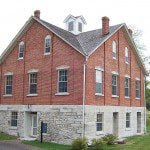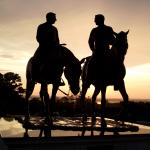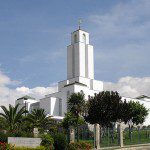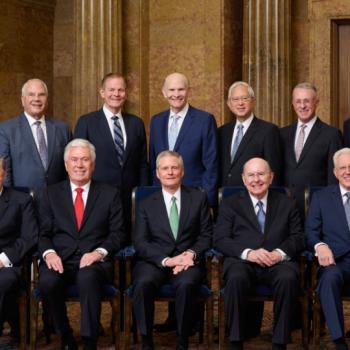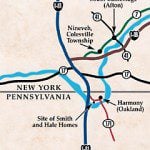
Our three core movie makers — Russ Richins, James Jordan, and Mark Goodman — filmed Camrey Bagley Fox and John Donovan Wilson and me today at various locations, mainly at the Smith Family Homestead, in front of the John and Elizabeth Browning Home and Gun Shop (where I wanted to announce the formation of the new Interpreter Foundation paramilitary wing, dedicated to a more effective defense of the Kingdom, but didn’t), and in a grove of large trees behind John Taylor’s house and the Times and Seasons office. After lunch, Russ and James and Mark went off to shoot B-roll footage around Nauvoo and Carthage, so my wife and I and Camrey were able — somewhat to our surprise — to take in a session at the Nauvoo Illinois Temple. (Johnny had already done a session at the temple on Tuesday, when he found himself with some down time from filming.) As it has been on previous occasions, attending Nauvoo’s rebuilt temple was a great privilege. Moreover, it’s a beautiful place. (A few photographs of its interior are available here.) If anybody had told me when I was young that I would someday be participating in ordinances in a temple in Nauvoo, I would not have believed it.
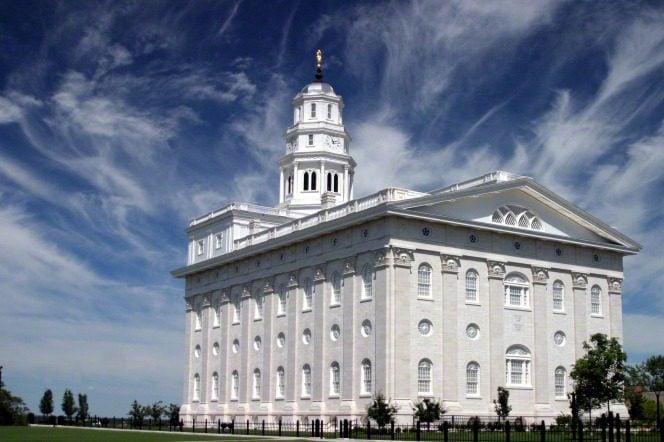
This evening, by the way, Johnny Wilson and Camrey Fox and my wife and I went across the Mississippi to Fort Madison, Iowa, and had dinner at the Turnwater Bar and Grill. We ate out on the outdoor terrace, looking at the river. It was beautiful. And the food was quite good. Frankly, the grocery and dining options in Nauvoo are pretty limited. However, we bought groceries and, now, we’ve had a good meal in Fort Madison. We actually saw at least two senior missionary couples eating at different Turnwater tables, as well as a group that including Juanita Coleman, the Illinois Historic Sites Manager for the Church, who has been very helpful to us.
About a month ago, when we first spoke with Sister Coleman and her colleagues on a video conference call, I could see the landscape beyond her windows and, frankly, it looked like Siberia. The ground was white with snow and the sky was gray and I began to dread this trip that we were planning. I figured that it would be wet and very cold. However, the weather here has been perfect. Crisp, but sunny and reasonably warm. Sweater weather. And I’ve really enjoyed the relative serenity of Carthage and Nauvoo. I can’t recall having ever been here when the sites weren’t bustling. But the big summer tourist crowds aren’t here yet, and we’ve been spending lengthy periods of time at the sites where we’ve filmed. In a curious way, that has allowed us — certainly it’s allowed me — to get a really good feel for these places. As it were, it has permitted me to marinate in them. And I’ve enjoyed that a very great deal.

(Wikimedia Commons public domain image)
Newly posted on the website of the Interpreter Foundation: “Reprint: George Mitton: The Crucifixion as a Mockery, Witness, and Warning of the Judgment,” written by George L. Mitton
Abstract: In its action, setting, and arrangement, the Crucifixion may be viewed as a stark mockery of the Final Judgment scene. This article provides a brief review of the relevant scriptures, considered together with some related apocryphal and other early Christian writings of interest regarding the Crucifixion. These sources point to the interpretation that the Gospel writers saw in the Crucifixion a striking symbolism that can provide a strong reminder, witness, and warning of the coming judgment. The Lord is seen in the Crucifixion as at once representing His humility in submitting Himself to be judged and, conversely, His authority and power to be the judge of all. The Crucifixion signifies the concept of a reciprocal or two-way judgment, as emphasized in the Book of Mormon, where mankind first judges the Lord, and later are to be judged accordingly by Him in return.
Part of our book chapter reprint series, this article originally appeared in Joseph Smith and Our Preparation for the Lord’s Final Judgment: Essays by George L. Mitton. For more information, go to https://interpreterfoundation.org/books/joseph-smith-and-our-preparation-for-the-lords-final-judgment/.
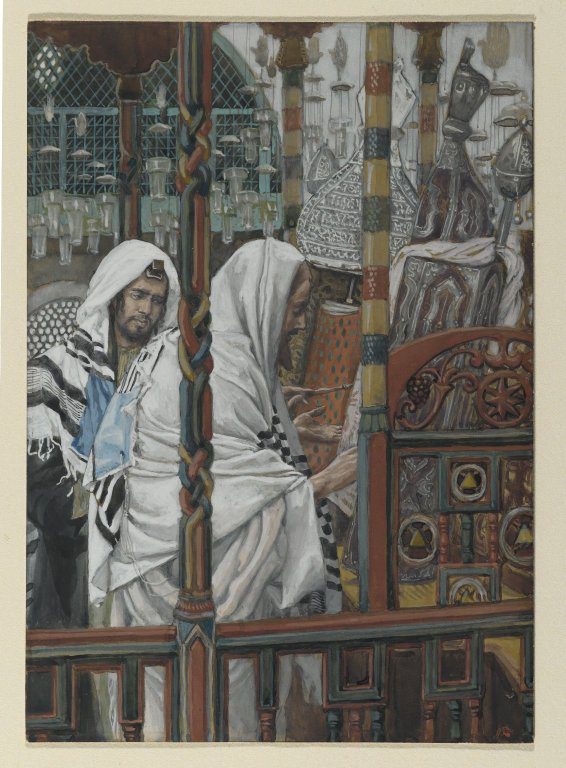
This is very unfortunate: “A difficult era for American Jews, including in Utah: Utah is not exempt from a national wave of antisemitism so severe that some Jewish-Americans are packing their bags” I’m disturbed, disappointed, and ashamed that anything of this sort is happening in Utah — though I hope (and am even reasonably confident) that none of those who are guilty of the acts described in the article are active members of the Church of Jesus Christ of Latter-day Saints. As I’ve argued elsewhere, the Book of Mormon is the only scriptural text in any significant religious canon that explicitly denounces anti-Semitism.
I hope that Latter-day Saints everywhere will take a stand, when it’s necessary, against anti-Jewish bigotry. It has no place in the heart or mind of any disciple of Christ. it has no place in the behavior or attitudes of any Latter-day Saint.
As I say, I’m saddened by reports of anti-Semitism in my adopted home state, which is the principal seat of my church. This article, however, which appeared in the Deseret News, has cheered me up just a bit. It grows out of the RootsTech family history and technology conference that was recently held in Salt Lake City: “How these Jewish genealogists are repairing Nazi ‘dirty deeds’: Looted Book Project aims to return stolen books to descendants of Holocaust victims”
Posted from Nauvoo, Illinois


